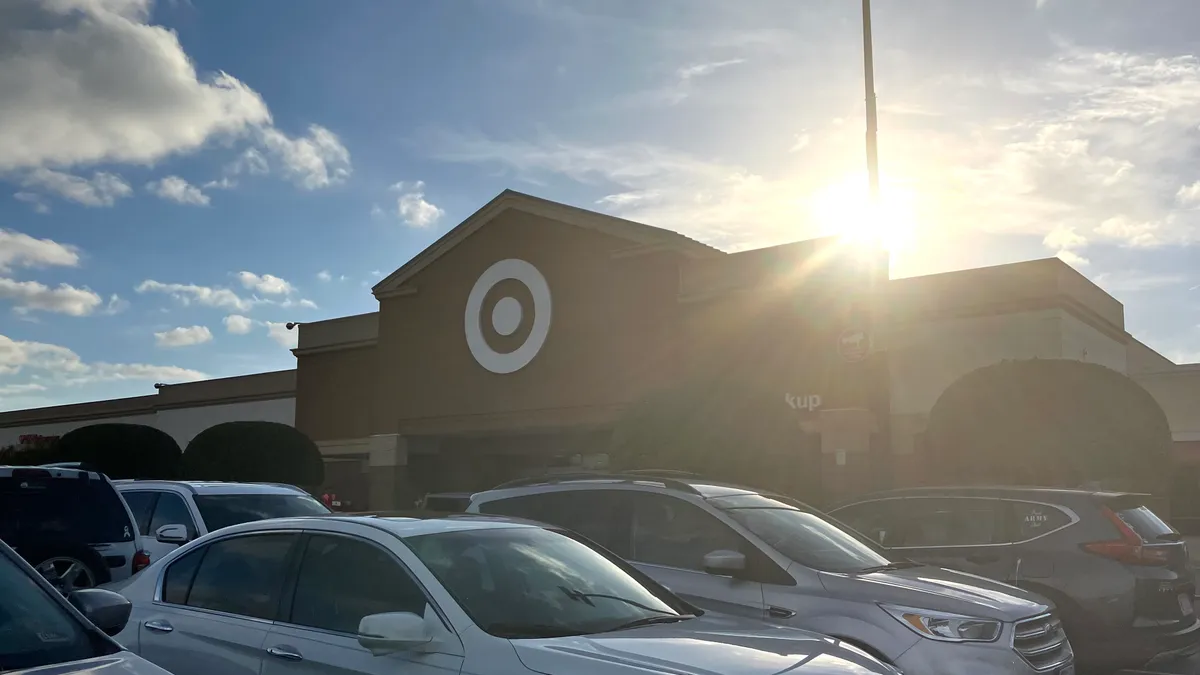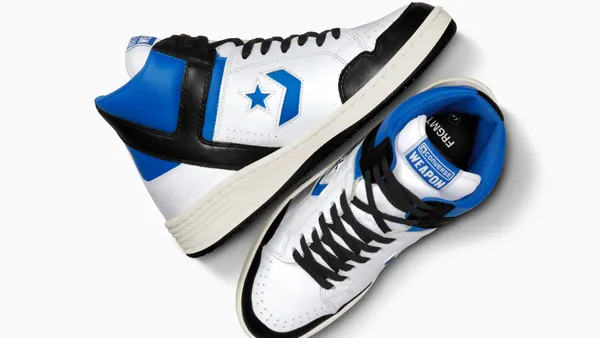Dive Brief:
- Target’s first-quarter performance missed some analysts’ expectations, with sales falling 3.2% to $24.1 billion, down from $24.9 billion a year ago, the retailer said Wednesday. Operating income also declined 2.4% to about $1.3 billion, down from $1.33 billion a year ago. Q1’s net earnings dipped 0.8% to $942 million from $950 million a year ago.
- Overall comparable sales fell 3.7% year over year and comparable store sales fell 4.8%. Digital comps rose slightly at 1.4%. Gross margin during the first quarter was 27.7%, up from 26.3% last year.
- CEO Brian Cornell said on a call with analysts Wednesday that Target’s digital sales increased in Q1 for the first time in over a year. Same-day services like drive-up, in-store pickup and same-day delivery drove that growth.
Dive Insight:
Wells Fargo analysts led by Edward Kelly said in a Wednesday note that Target’s Q1 performance “was a little light versus market expectations.” Although comps aligned with expectations, earnings per share fell short and Q2’s outlook is “a touch more timid than expected.”
Cornell said the effects of the economic environment on consumer spending continue to drive softening trends in discretionary spending, including in its home sector. In contrast, Target has seen upticks in other areas like apparel, where performance improved by about 4 percentage points from Q4.
“This gives us some optimism that we could see a better balance of spending between discretionary and frequency categories in the years ahead. However, given that we're facing continued uncertainty in the near term, our team remains focused on operational excellence and the agility to respond quickly to changes in the environment,” Cornell said during a Wednesday earnings call.
By the end of this summer, Target plans to cut prices on nearly 5,000 mostly nondiscretionary grocery, household and beauty items, the company said earlier this week. The company said it has already cut prices on about 1,500 items. Additionally, Target in February launched Dealworthy, a new low-priced private label, that offers home, personal care and beauty basics.
Target is in a tougher spot than other retailers because of its sales mix and the inclination of its shoppers to make impulse purchases, Neil Saunders, managing director of GlobalData, said in emailed comments.
“Target has not been able to make up all this lost ground in the non-discretionary space,” Saunders said. “While sales results in this category are not terrible, neither have they kept pace with the overall market. From our data, Target has lost some customers and share in grocery and particularly in household products.”
Additionally, consumers sense they can shop for less elsewhere, Saunders said, which has increased overlap with rival Walmart over the last year. While the price drops are a good move, Saunders said the retailer needs to refocus on its store experience. “Merchandising disciplines have worsened, ranges are feeling tired, and policies such as restricting the use of self-checkouts which creates longer wait times, are all frustrating customers,” Saunders said. “This is one of the reasons store sales are down by around 4%.”
And due to potential consumer trade-down and an ongoing reluctance or inability to spend on discretionary items, “Target faces the largest potential macro headwinds,” Roth MKM Managing Director Bill Kirk said in a Wednesday note.
Cornell said Target will continue to focus on offering newness to customers. Two recent points of newness include the launch of Dwayne “The Rock” Johnson’s men’s grooming line, Papatui and Target’s launch of Taylor Swift’s latest album, “The Tortured Poets Department.” Chief Growth Officer Christina Hennington said the Target-exclusive version of megastar Swift’s album, along with three CD options, “was the strongest music pre-order in our history.”
Hennington also said during the call that the company is “encouraged by the reaction to our April relaunch of Target Circle.” The program now includes free and paid membership tiers. The company added more than 1 million new members to the loyalty program in Q1. Target Circle has more than 100 million members overall, which makes it one of America’s largest loyalty programs, according to the company.
Target’s latest second-quarter and full-year guidance anticipates a flat to 2% increase in comps.














